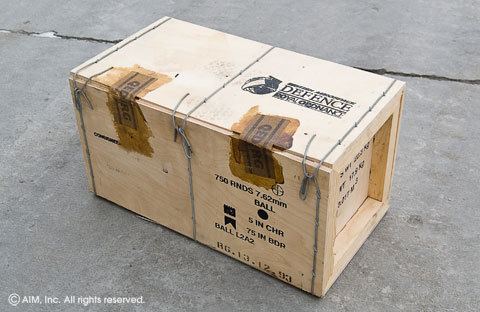 | ||
Similar Alsager railway station, Coronation Chair, Peters Cartridge Company, Sullom Voe Terminal, Crewe railway station | ||
The former Royal Ordnance Factory (ROF), Radway Green manufactures small arms ammunition for the British armed forces. It is located in the hamlet of Radway Green near Barthomley near Alsager in Cheshire in the UK. The factory, which is now owned by BAE Systems Global Combat Systems, was established in 1940. It has manufactured a wide range of ammunition, including:
All ammunition currently produced at Radway Green is NATO certified i.e. bears the NATO roundel as part of the headstamp on the cartridge case surrounding the primer. Additionally, headstamps bear the ammunition type ID, the initials "RG" plus the year of production e.g. "L18A1 RG 11" for 5.56×45mm blank cartridges manufactured at Radway Green in 2011. Headstamps on cartridges manufactured during the Second World War and in pre-NATO years bear the initials "RG", the year of production and the broad arrow to signify Ministry of Defence property.
The ordnance factory has its own firing range on-site, where batches of ammunition are periodically test-fired from a variety of different weapons. The intention of test-firing is to check for proper function and performance within contract requirements such as reliability, consistency (e.g. velocity tested via gun chronograph) and accuracy at various distances from the muzzle etc.
A private, dedicated spur once led off the main former London, Midland and Scottish Railway railway line to facilitate transfer coal and other raw materials inwards and the final product outbound.
On the 20 August 2008 the Ministry of Defence announced a £2bn contract with BAE Systems to supply British forces with small arms and medium calibre ammunition.
Thefts from factory
On 21 January 1985 a former quality controller at the factory was sentenced to six years imprisonment after pleading guilty to conspiracy to steal, three charges of theft and asking for eight other offences to be taken into consideration. After the thefts were discovered, it took a team of four Ministry of Defence Police officers a fortnight to recover around £26,000 worth of goods stolen from the factory (which included a rocket launcher) from the man's house in nearby Alsager. The man's son, an apprentice at the factory, "resigned in disgrace", but charges were left on file, and he was not prosecuted. The thefts were believed to date back at least ten years, and the prosecution stated that there was some evidence that the man had also stolen from ROF Chorley when he was based there. In the wake of the thefts security was tightened across all Royal Ordnance Factories.
